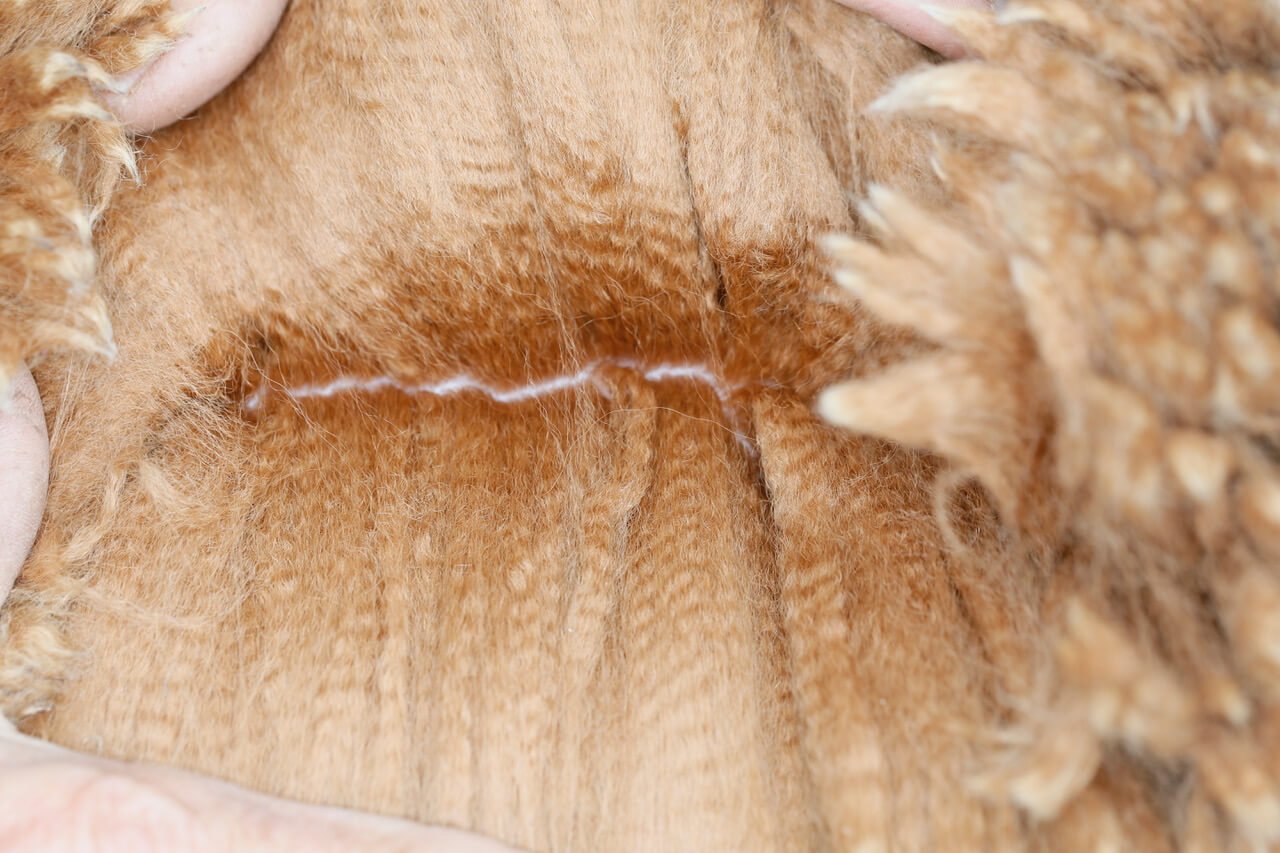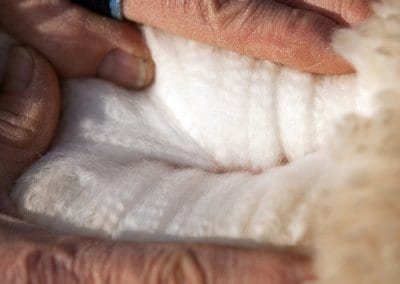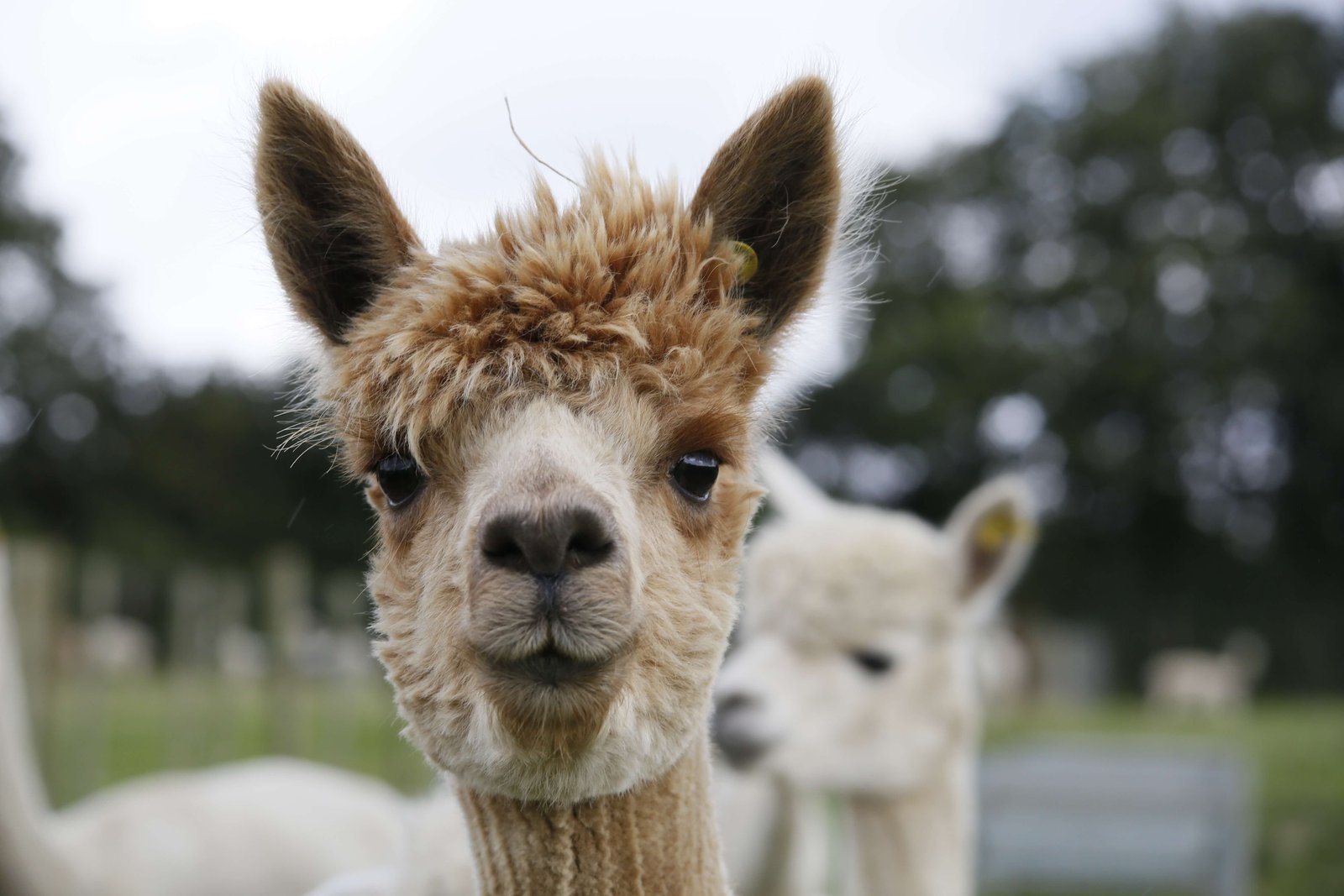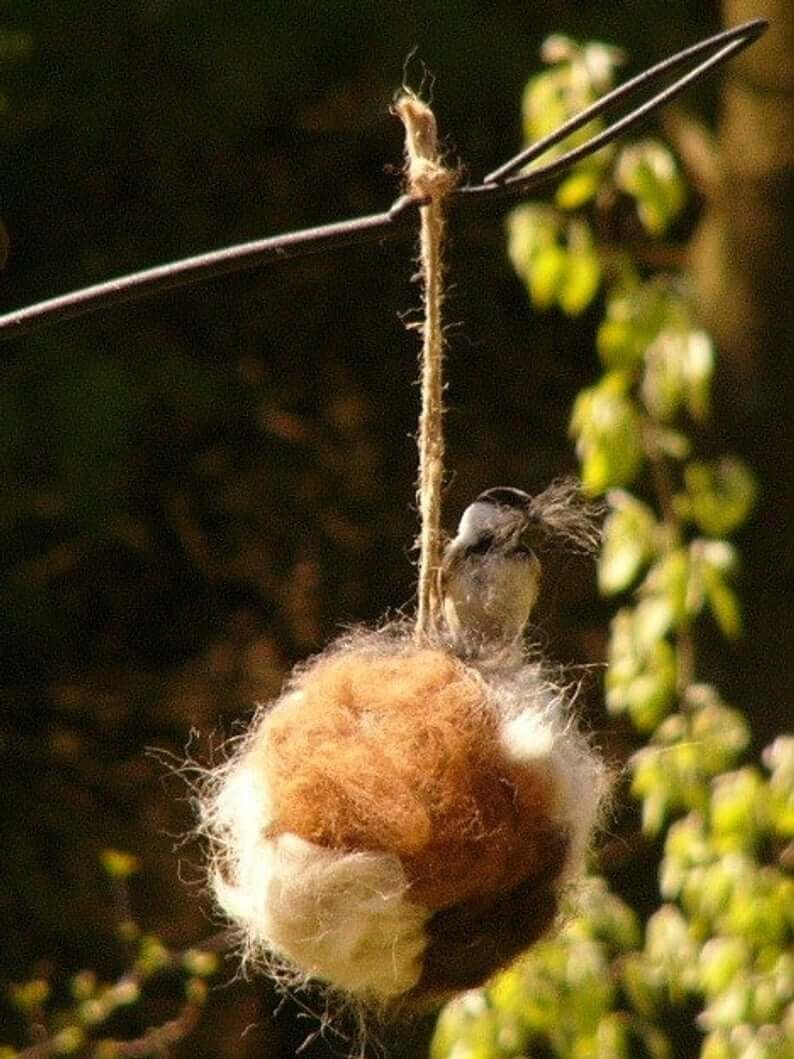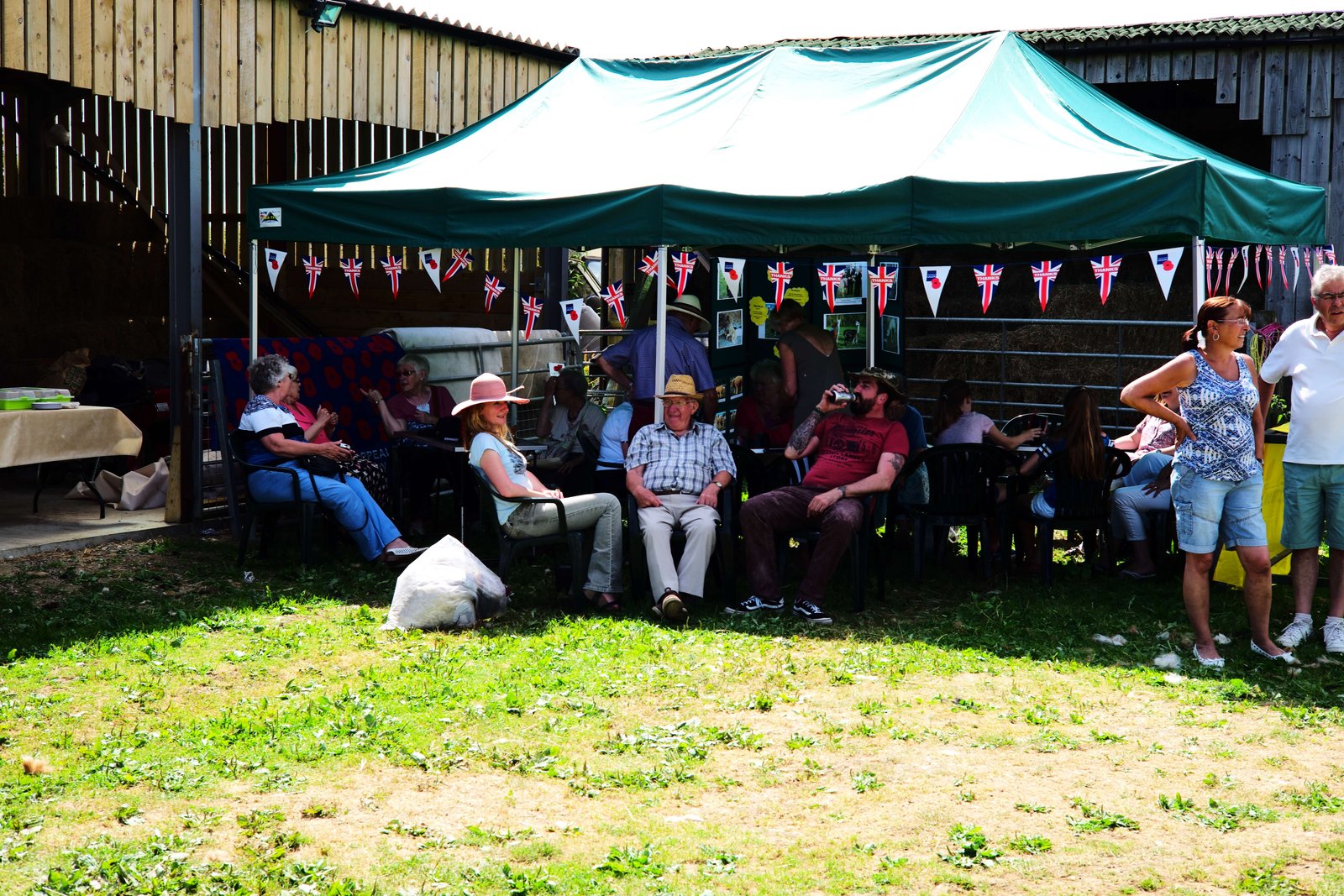About Us
For information about Di, the alpacas, and how to care for them.
Di’s story
I was a serving Army officer when I first met alpacas at the New Forest Show in 2000. I had owned three acres of land at Charmouth, in West Dorset which I initially planned to turn into a herb farm. However, this was no more than a possibility and there were a large number of unresolved question. Meeting alpacas was love at first sight and driving home after the show, I decided that this was what I would like to have on my land.
After a lot of research, I discovered that Alpacas of Wessex were importing some breeding females from Australia, where I knew having served in the country for 2 years, the farming industry was heavily into genetic breeding. Thus I decided that Australian bred alpacas would be a far better purchase than stock from Peru. The major advantage would be that I would be buying known genetics – a key fact for a herd that I hope to develop into one of the best in the country.
As a result, I bought three pregnant females from this first consignment and the Alpha herd was born.
– Meet the team –
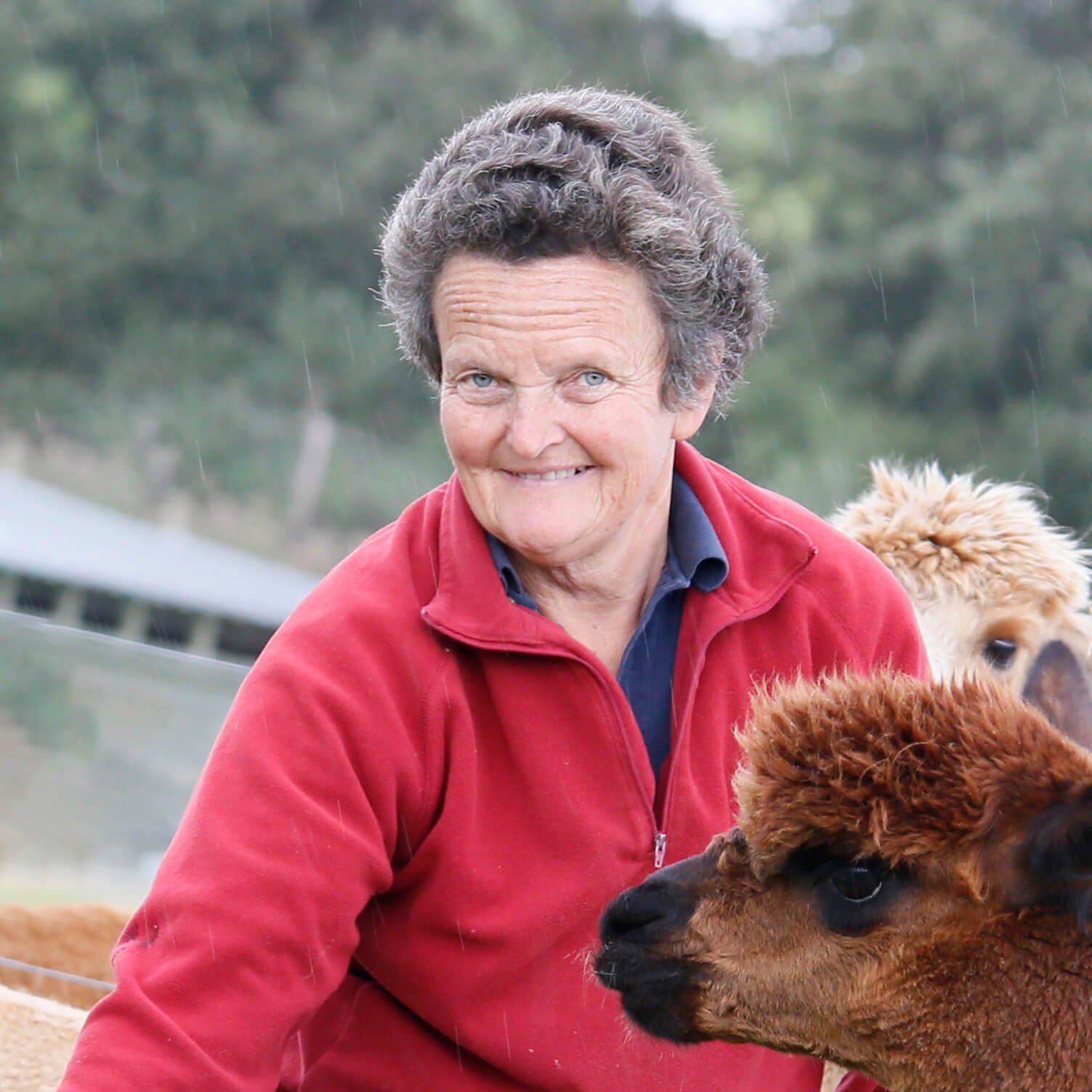

Di Davies
Once a Colonel in the Armed Forces, Di now has turned her interest towards alpacas and breeding, after falling in love with them at first sight in 2000.


The alpacas
Alpacas are endearing creatures and very inquisitive so if you are in their field they will always come to see what you are doing.
On the farm we have one type of alpaca; Huacaya. Below is information about both types of alpaca.
– Alpaca history –
Alpacas are members of the Camelid family. At the time of the division of the world into the current continents, the members of the Camelid family, that we know as camels – the single and double humped camels and dromedaries were left in the areas that are now parts of Asia, mainly the Middle East and Australia. Those without humps, two genus – the Vicuna and the Guanaco, moved with South American continent, where they are still found in the wild and are protected species. These were the foundation stock from which the Incan people bred the domestic alpaca and llama some 6000 years ago. The alpaca was developed from the Vicuna primarily as a fleece producing animal with meat as a secondary role. The llama was developed from the guanaco as a beast of burden carrying loads of up to 25 Kg for 10 12 12 miles a day. Today, four species of the South American camelids are mainly in Peru, with some in Chile and Bolivia, where they live on the melt water plateau of the Andes at some 3000 metres.
Initially the Incan people kept their domesticated camelids on the rich grazing of the coastal plains, but the arrival of the Spanish Conquistadors in 1532 who wanted the land for their cattle and sheep resulted in a massive slaughter of the camelids and a displacement of the native 50 million Incan people higher into the Andes. Fifty years later less than 1 million Incans remained on the coastal plains, and with the loss of so many people to work in the mountains, the sophisticated breeding programmes to provide extremely fine fibre, known as Incan gold and used as a currency, ceased and for the next 450 years the alpaca became subsistence livestock for the indigenous peoples of the Andes.
– Huacaya –
The Huacaya, representing over 95% of the bred, where the fibre grows vertically out of the skin in small bundles/locks with a tight crimped wave, giving the alpaca a ‘Teddy Bear’ look. Huacaya fibre is largely used in the woollen industry.
– Suri –
The Suri is much rarer, with a fibre that grows out of the skin in bundles/locks without any crimp wave. The locks twist and hang down the flank giving it an appearance like a Wensleydale sheep. Suri fibre is mush heavier than Huacaya fleece and is akin to silk, making it suitable for the worsted process of manufacture , where it retains a beautiful lustre and is used for suiting and clothing.
Alpaca fibre first arrived in the UK in the ships bringing guano (seagull faeces) as a natural fertiliser for British Agriculture in the mid-1800s. where the fibre was used as ballast on the sailing ships, and on arrival at Liverpool docks it was stored in the warehouses. Fortunately it was sighted by a woollen entrepreneur Titus Salt, who recognised its potential value and over the next few years he created the village of Soltaire in West Yorkshire, which was built to provide all the facilities needed by the mill workers, schools, health centre, shops and housing, but no public house as Titus was a Quaker, and the mill produced a wide range of alpaca products which became the ‘ must have’ garments of the rich. This was a huge boom industry until the start of the First World War, when many of the workers were conscripted, the trade in guano was replaced by chemical-based fertilisers and Britain entered a major recession. Produced slowed and then ceased and whilst much of the village and mill remain today the mill is now an art gallery.
The only live alpacas believed to have been brought to the UK during this period were to form a small herd for Queen Victoria in Windsor Great Park. Sadly, the alpacas did not adapt to the British climate and this coupled with a major change resulted in them not thriving. For the next century the South American camelids were only found in British zoos.
Shortly after the Second World War, English spinning mills were established in Arequipa in Peru working closely with the fibre being produced by the indigenous farmers in the |Andes. The Peruvian government started to support programmes to get the alpaca back to its Incan quality. However, whilst the Government farms used very tightly controlled breeding programmes which led to dramatic improvements in the quality of the fibre, in the villages the alpacas and llamas are kept overnight in village pounds, so cross breeding between the lama and alpacas inevitably occurs. The export of alpacas from South America to the USA, Canada and Australia began in about 1990, and then in 1996 there were some large exports to the UK from Chile. Subsequent exports followed from Peru and today very small select shipments continue from Peru, USA. Canada and Australia, but alpacas in such shipments not only occur significant transportation and quarantine costs, buts with needs to meet quality and health standards, importing is a lengthy and costly experience, when the quality of the British herd has improved dramatically and the top quality herds are now close to achieving the original Incan standards.


Alpacas


Acres


Over 400 awards
– Why alpacas –
Alpacas are a great alternative to traditional livestock and come with many benefits
Why keep alpacas?
The alpaca has taken the world by storm and there are now thought to be more than three million alpacas in South America and they are being successfully bred in North America, Australia, New Zealand, South Africa and most recently China where as a result of a five year study, the report recommended that China wants a herd of five million, some to replace the Kashmir Goat herds and to support the Chinese fibre industry. This target will take a while to achieve. Alpacas are now to be found throughout Europe. In Britain, the growth or our herd has been amazing and there are now in excess of 40,000 alpacas registered with the British Alpaca Society and a declining number of unregistered lower quality stock, emanating from the early imports.
Alpacas are a niche market livestock giving owners with limited land the ability to establish business or enjoy the animals as pets or working protection animals, mainly against foxes, therapy animals or to run alpaca walking experiences. However, the major role of alpacas in the UK is as fibre producers, where the softness, and strength of the fine yarns produced in a wide range of natural colours from pure white through to a true blue black, with the various shades of beige, fawn, brown, grey and black is proving to be excellent market. Huacaya fibre is now being used in a very range or products with the ability to blend it with other luxury fibres such as silk, fine rare bred wool and merino or nylon for hard wearing products such as socks. Alpaca fibre has been described as ‘Nature’s Gortex’. It is almost completely waterproof, with great wicking abilities. It is hollow, which traps in more heat than wool, and mechanically pushes the water away, having a natural saturation point on the skin. Essentially, the water evaporates because of the warmth generated when wearing the fibre.
An alternative livestock
Alpacas offer a very attractive alternative to other livestock. They live outside all year but do appreciate some shelter in the form of hedges, a large tree or a simple field shelter.
They are very hardy, living 14 to 18 years and rarely need a vet. They are not born with a death wish as most sheep seem to have.
They do not challenge fencing and unlike sheep and goats, they are not escapologists. They are, however, inquisitive so if you leave a gate open they will go exploring, as a group!
Alpacas are members of the camel family so have pads and nails rather than hooves – thus they do not poach your ground as cattle, horses, sheep and goats do. They are herd animals which must be kept in groups. A single alpaca will become very stressed and will not survive.
Keeping alpacas
Alpacas are endearing creatures which are easy to keep if you have a minimum of an acre of land.
They need grass, water and hay all year. All alpacas sold by Alpha Alpacas are halter trained so they are easy to handle. Alpacas are also very good with children and will get to know and accept your other pets. Alpacas are very inquisitive by nature so if you are in their field they will always come to see what you are doing.
Alpaca husbandry is straight forward and after a half-day hands-on course at Alpha, you will be able to meet all the husbandry needs.
Male alpacas develop pooh piles so it can be easily collected and as manure is very popular with gardeners. The male alpacas make excellent guards for poultry, sheep and waterfowl from unwanted visits from foxes.
– Alpaca fibre –
The Alpacas primary role is fibre production and it is one of the most luxurious fibres in the world.


Light but very warm


Finer than cashmere


Stronger than mohair


Softer than cotton


A dry fibre containing no lanolin
Strong, yet soft
Alpaca fibre is extremely soft, yet strong and hard wearing. Unlike cashmere, it does not pill as due to the natural crimp in the fibre moves with the wearer.
The fibre has a very low ‘prickle factor’ due to a lack of primary strong fibre – those who can’t wear wool can normally wear alpaca.
It is super lightweight and very warm in winter and cool and airy in the summer, and also 100% sustainable and eco-friendly, its processing does not harm the environment.
Much like polar bear fur, the air pockets allow heat to be trapped, creating a greater thermal capacity compared to other natural fibres. The polar bear, which is not sheared annually, can swim in the ice-cold Arctic waters and then be walking across the open ground in mid-summer and remain ‘cool’.




Happy alpacas
Alpacas are herd animals and are happiest kept in a group of a minimum of three. They will live happily with sheep, goats and Horses who are unshod, as the flying hoof or a horse kicking a sheared alpaca could cause fatal injuries. However, either side of a fence, horses and ponies get on well with alpacas.
Whilst it depends slightly on the quality of your land on average alpacas can be kept at the same stocking ration as sheep, of 3-5 per acre. They are good grazers, who to keep their digestive system working smoothly, must have continual access to hay.
We work on the principle that each alpaca eats five to six small bales of hay per year. Supplementary feeding of breeding stock is advisable all year and when the grass is of poor quality. However, the percentage of hard feed required to sustain a healthy alpaca is very small when compared to other livestock.
Caring for alpacas
At Alpha Alpacas all prospective owners are invited to spend time with us going through all aspects which require a simple routine and once taught, is easily achieved, through regular hands-on checks.
All our alpacas are halter trained which means that care is undertaken in a stress-free environment for owners and alpacas. Alpacas do not challenge fencing and so fencing should be approximately 4-foot-high and simple stock fencing (sheep fencing not cattle) topped off with either plain wire or a rail.
For obvious reasons with a big fleece, barbed wire must not be used. Huacaya alpacas are normally sheared each year and Suri every 2 years.
We help all our clients to obtain suitable shearers and local clients alpacas are collected and brought to Melplash for shearing and clients are invited to assist on what is a busy but very social day.
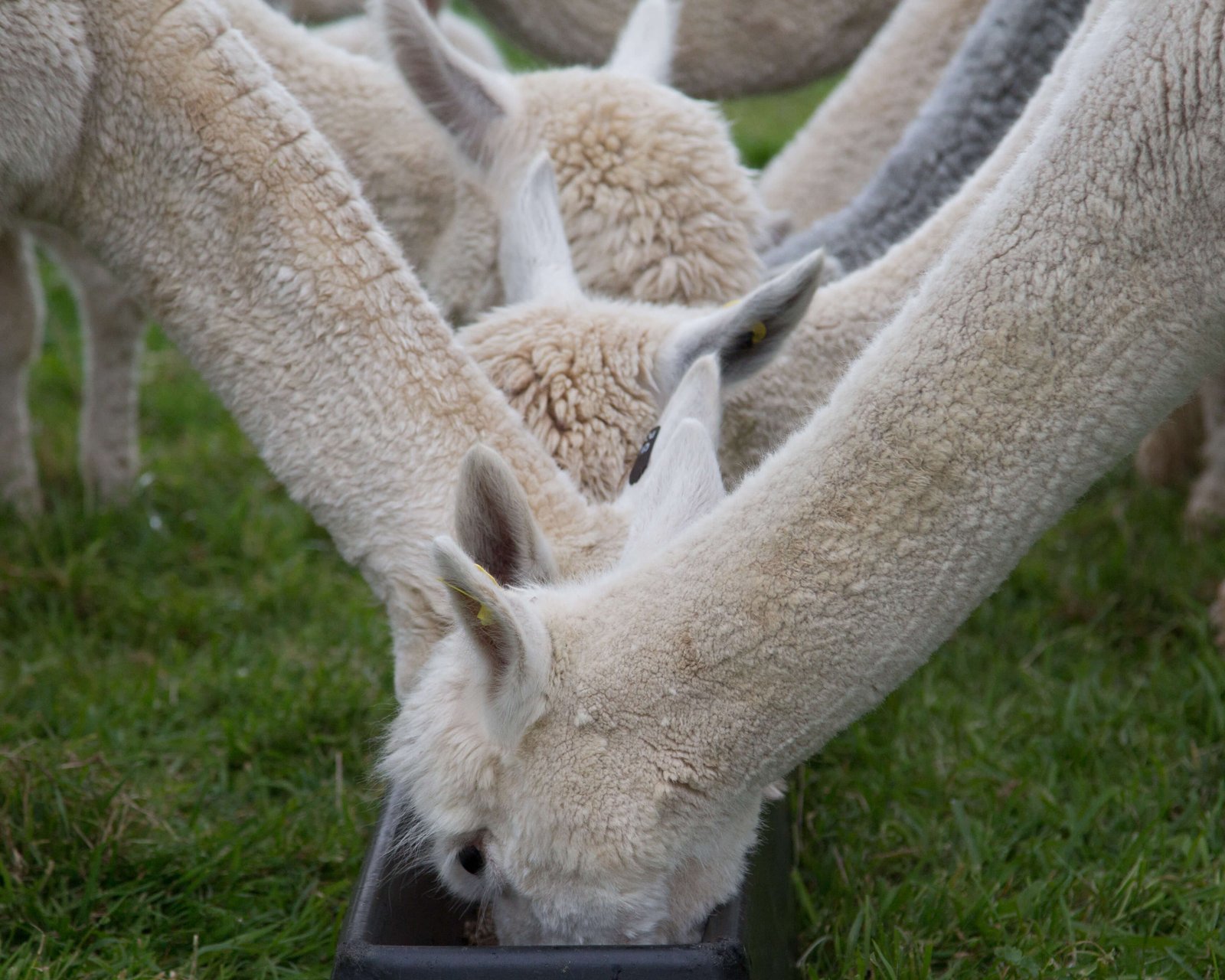

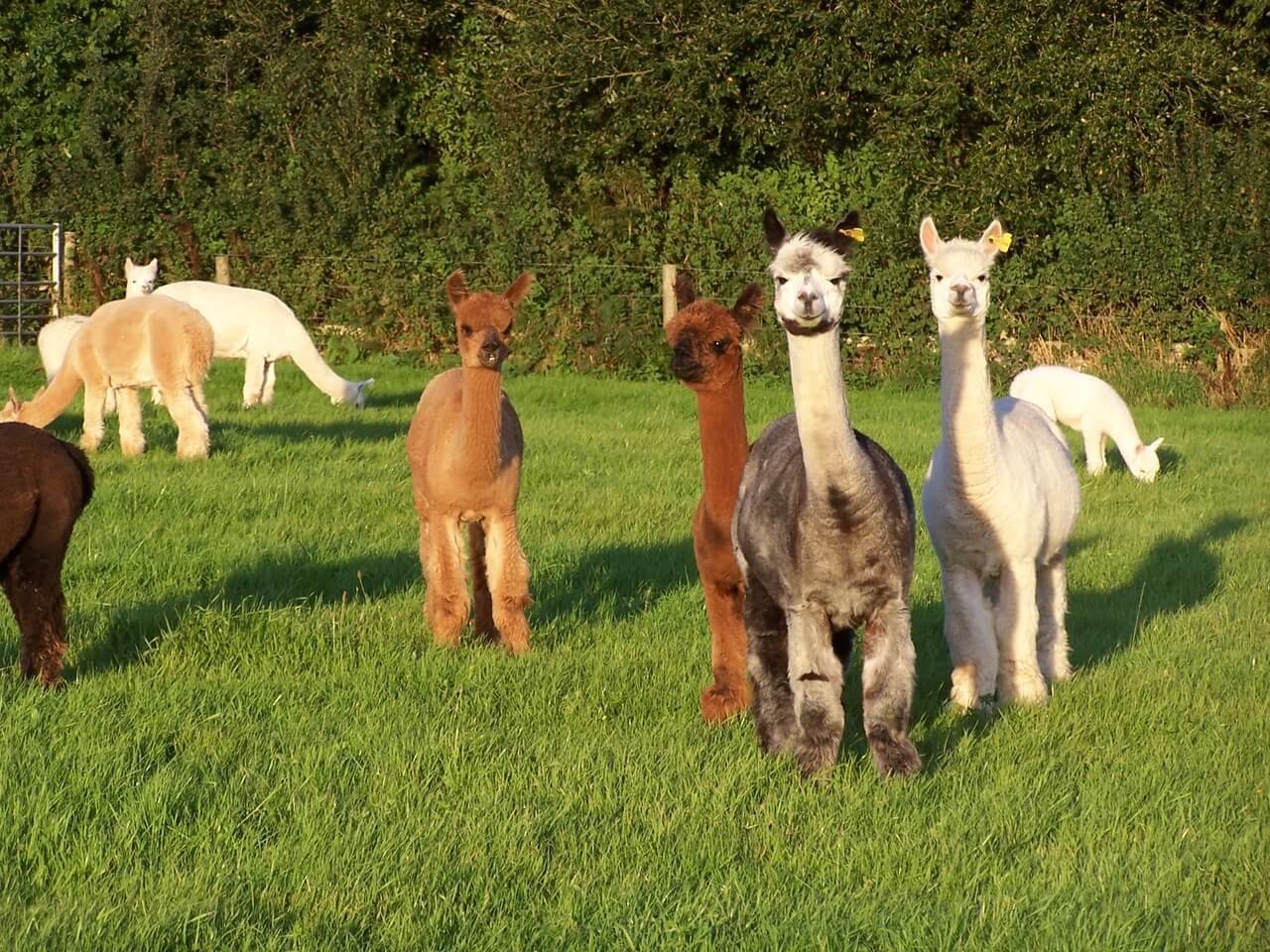

Alpaca breeding
Breeding alpacas is a very slow process as females have a gestation period of approximately 340 days and we recommend that young females are normally not mated until they are about 2 years old.
Alpacas are induced ovulators so you don’t have to wait for them to come into season and so you can determine the arrival dates of cria (babies) with some degree of accuracy – we recommend birthing from May to August when the weather is normally warm and the grass is at its most nutritious.
– Preparation for shearing –
The Alpacas primary role is fibre production and it is one of the most luxurious fibres in the world.
Shearing day
Shearing day is the most important day in the Alpaca Year, as this is when we harvest the wonderful fibre that our Huacaya alpacas have spent the last 12 months, or in the case of Suri alpacas, 24 months growing.
Preparation for shearing should start about a month before shearing, when if possible the herd should be moved onto clean grazing, which has not been recently topped and ideally contains no sandpits that alpacas love rolling in. Sand or soil in fleeces on shearing day is a nightmare for the shearers as it blunts their cutters. If dust bowls do exist they should be fenced off or covered.
Before putting the alpacas onto the clean grazing, hedge lines should be checked and Brambles, Burdock and Cleavers removed, to prevent them turning up in the fleece.
Access to hay must be available, but make sure that the alpacas cannot sit under the hay bag as they will cover themselves in it. Wheeled hay racks are the best option as any loose hay can be swept up daily.
Shearing day
On shearing day, the alpacas must be dry, so if there is any likelihood of rain, if possible they should be housed, with bedding provided – straw or cardboard chips, so that they do not lie in the pooh or urine overnight.
If there is a heavy dew the alpacas may need to dry off in the sun prior to shearing as the key is – wet fibre is of no value as it will rot quickly and produce an unpleasant smell.
Taking care of the fibre
If manpower permits, it is well worth having a ‘picking off’ team who whilst the alpaca awaits shearing, remove as much vegetation form the fleece as possible.
Finally, use of a large skirting table is essential if as much debris and dust is to be removed from the fleece. Clean well skirted fleece = Higher prices.
– Uses for alpaca fibre –
There are many uses for alpaca fibre beyond the standard application
Ripen strawberries
Fibre can be used under your strawberries instead of straw, providing a UV nest for the fruit as it absorbs and holds the heat of the sun, whilst at the same time being impenetrable to slugs, snails and woodlice. As with the slug repellent, the fibre is re-useable for a number of years.
Slug repellant
Alpaca fibre makes a very effective slug repellent with the added benefit of being nature-friendly. Use the fibre to surround the base of vulnerable plants, using a few pebbles or grit to hold it in place. It is particularly effective round Hosta, or if the plants are in containers, place a mat of fibre under the vessel and allow it to protrude all the way around. In both cases, there should be a band of fibre 3-4 inches wide to protect the plant from slugs and snails.
The fibre works by absorbing the mucous, which is key to the movement of slugs and snails. Once they start trying to cross the protective fibre, without their mucous, they become beached and they either died through hypothermia or shrivel up in the sun. They can then be safely consumed by wildlife.
At the end of the season, the fibre can be gathered up, dried and kept in a sealed container for use next season. Alternatively, it also makes an excellent mulch if forked in.
Bird nesting material
Hang some fibre up in a container in your garden and the birds will flock to it as they love to line their nests with it. With the qualities of the fibre particularly the heat retention, it has been suggested that the use of fibre may well increase the breeding rate of the birds.
Keep beehives warm and dry
How does it work?
Alpaca fibre is a very fine, dense fibre which is highly absorbent, catching any moisture and then releasing it back into the atmosphere when there is a dry airflow. The fibre is unlike sheep’s wool in that it has no lanoline and alpacas stay warm and dry simply because of the density of their fibre.
Alpaca fibre ‘duvets’ are now being used by an increasing number of beekeepers to replace the Crown boards on their beehives and the results have been excellent. Their hives have stayed warm and dry throughout the winter with no mildew.
How to make a beehive duvet
A great way to make sure your bees are warm and dry
What you will need:
- A bag of alpaca fibre – available for £7.50 incl p&p from Alpha Alpacas (see shop for more details)
- Sufficient timber 2 inches by ½ inch to make a frame to sit on the top of your hive, immediately below the roof
- 8 x 1-inch nails
- Wood glue (optional)
- Sufficient hessian to cover both sides of your frame
- Staple gun and staples (alternatively large headed tacks can be used)
How to:
1. Cut your wood to create a frame to sit on top of your hive. Glue and nail frame together.
2. Staple/tack hessian to one side (the bottom).
3. Pack alpaca fibre into the frame and compress slightly.
4. Staple/tack hessian to the top of the frame.
5. Place frame on the top of your hive in place of your crown board.
– Visit an alpaca breeder –
Most potential clients will have met Alpha Alpacas either at an Alpaca Show or more frequently at an agricultural show or other event where we have the Alpha trade stand selling our alpaca products and three alpacas for our visitors to be fascinated by and frequently fall in love with and want to learn more with a view to joining the fantastic world of ‘Alpaca ownership’. Time is always at a premium at shows so if you would like to learn more and see out farm you would be most welcome to contact us and book a visit to the farm in West Dorset.
We normally have about 50 alpacas on farm, 30 of whom are breeding females and if you visit between May – February many will have cria (babies) at foot.
The needs
Such a visit will help you to confirm why you would like to have alpacas, as different alpacas fulfil different needs:
- If you have a small lot of land ¾ to an acre of grass, they are a good alternative to a ride on mower – saving time spent on riding around on a mower, consuming both your time and fuel and doing the work while you just sit and enjoy them and their antics. Fleece quality for four-legged mowers may not be a major factor but healthy alpacas is a definite must.
- If you have several acres and are looking for a long-term investment as an alpaca breeder, either on a very small basis where the prices achieved for sales will be dependant on the quality of the fibre and colours. Key to such a small herd is that the alpaca’s conformation (structure and skeletal features) must be very good.
- Do you have high aspirations and would like to become immersed in the world of alpacas looking to breed top quality show winners. In such a case the quality of the alpacas is key both their conformation and fleece should be the main drivers of your potential purchases.
- Do you have chickens, water fowl or sheep who lamb outside, where alpacas can be used as most effective guards. With vision that is five times stronger than the human eye and a very strong herd instinct where anything smaller than them needs protection, they are ideal for preventing attacks by marauding foxes, who if not so cunning, end up dead in your field, stamped upon by a protection alpaca while his or her two companions round up the stock like a pair of sheep dogs! Males are normally used in this role, but it is also a suitable role for non- breeding females.
- Are you involved in the tourist industry and have a spare paddock in which to graze alpacas as an attraction or to offer alpaca walking or wedding attendants?
- Alternatively, alpacas are becoming increasingly popular as therapy animals, accepting special schools or residential homes where they quickly develop a great affinity with the residents and have been particularly successful in dementia care.
Other factors
Other factors you should consider before buying alpacas:
- The amount and quality of grazing you have available.
- Your budget for your project as the costs of alpacas depends on their role, sex, and quality of conformation and fibre. You will also need fencing and some sort of field shelter.
- Alpaca husbandry is very simple, but they do need to be regularly checked to ensure they have the basics of food – grass/hay/supplement when the grass is poor, shelter and all are behaving normally.
Bio-security
Keeping unwanted visitors in the form of wildlife out of our fields. We have a six-foot-high deer fence with anti-badger fencing dug into the ground beneath it and our herd is tested annually for Bovine TB.
Healthy and happy
Healthy and happy alpacas who are all halter trained making the handling of them stress-free for both the alpaca and its owner. We have a health regime agreed with our local veterinary practice and we are a training farm for final year students from the Royal College of Veterinary Science, University of London, with groups visiting the farm on a monthly basis.
High-quality fibre
The production of high-quality fibre and we will show you the various qualities the fibre and allow you to get up close with our alpacas, including taking them for a walk around the farm where our alpacas live in single-sex groups of similar ages.
Support
Alpacas have a normal lifespan of 14-16 years, although we have had some individuals well into their twenties. All new clients are invited to spend a minimum of half a day on the farm learning basic husbandry before they take possession of their herd. Pre-sale consultancy is also offered if requested on the set up of fencing and other requirements. Alpha Alpacas is a Training Affiliated Farm of the British Alpaca Society so more advanced courses are available if you are intending to become a breeder or simply wish to learn a lot more about alpacas and meet fellow alpaca owners.
The alpha herd was formed in 2000 with three females, two of whom were pregnant, imported from Australia. As we approach our twentieth anniversary, this year our 200th cria is due to be born on the farm, which is a 15 acre site designed and built to suit both the alpacas and my ability to run the farm on a day to day basis with help at weekends on such things as pasture management and fencing.



